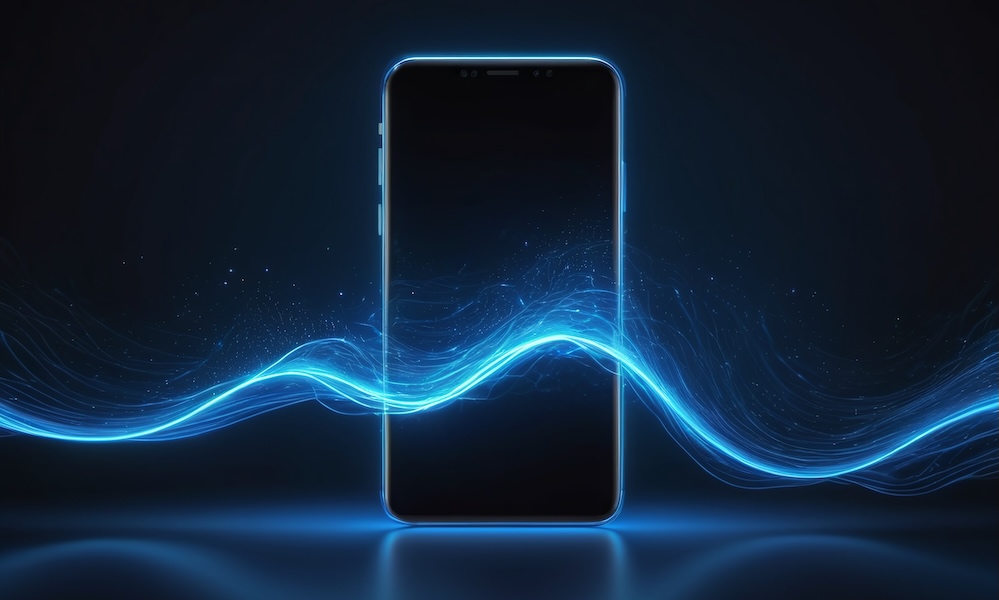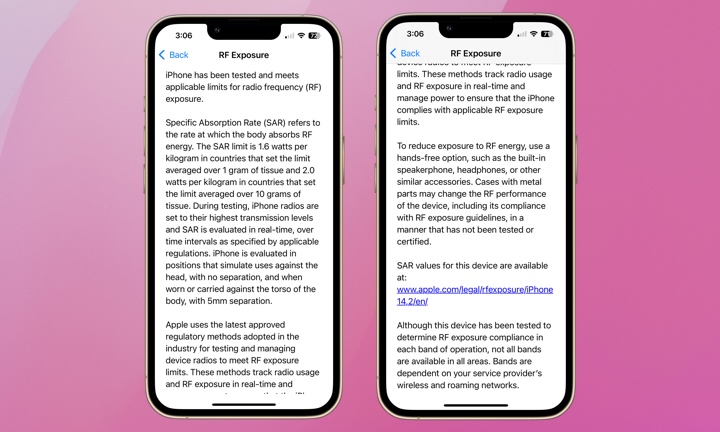What Does Apple Say About RF Exposure?
 Zsolt Biczó / Adobe Stock
Zsolt Biczó / Adobe Stock
Toggle Dark Mode
Like all smartphones, your iPhone emits radio frequency (RF) radiation. However, it’s also been tested and meets applicable limits for RF exposure.
Do you know what this means? Given our daily interaction with natural and artificial RF radiation sources, we thought we’d review the basics. After all, Apple provides a statement about RF Exposure in its Legal & Regulatory notices available in your iPhone’s Settings.
Is RF exposure safe, or does it cause cancer? The answer seems to be “both” or “maybe,” so let’s go with “no.” Sound familiar, New Jersey readers? Just kidding. I think we know much more about RF radiation than the mystery crafts over the East Coast.
RF Radiation According to the American Cancer Society

Radiation exists across the electromagnetic spectrum, which ranges from low-energy (low-frequency) to high-energy (high-frequency) radiation. RF radiation, which includes radio waves and microwaves, is at the low-energy end of the electromagnetic spectrum. According to the image above, low-end radiation is also called “non-ionizing” radiation, which means it doesn’t have enough energy to remove electrons from an atom.
People are naturally exposed to RF radiation from the sun, sky, and the earth. Artificial exposure comes from radio and TV signals, cell phones, two-way radios, and Wi-Fi, to name a few. It’s nearly impossible to eliminate RF radiation exposure from your life. However, limiting your exposure to the extent possible is a good idea.
Studies done in labs and on people aren’t conclusive on whether or not RF radiation causes cancers in humans. International and federal agencies also differ in their position on RF radiation. For example, here are some official positions from just a few agencies:
- International Agency for Research on Cancer (IARC): RF radiation is “possibly carcinogenic to humans.”
- US Food and Drug Administration (FDA): There is “insufficient evidence to support a causal association between radiofrequency radiation (RFR) exposure and [tumor formation].”
- US Federal Communications Commission (FCC): “[C]urrently no scientific evidence establishes a causal link between wireless device use and cancer or other illnesses. Those evaluating the potential risks of using wireless devices agree that more and longer-term studies should explore whether there is a better basis for RF safety standards than is currently used.”
What Does Apple Say?

Apple makes a statement about RF exposure under Settings. To view it, go to Settings > General > Legal & Regulatory > RF Exposure.

Apple states the iPhone has been tested and falls below the acceptable Specific Absorption Rate (SAR) limits for RF exposure as set by “applicable regulations.” The SAR limit is 1.6 watts per kilogram in certain countries. During testing, iPhone radios are set to their highest transmission levels and tested in positions that simulate using the iPhone “against the head, with no separation, and when worn or carried against the torso of the body, with 5mm of separation.”
Interestingly, Apple adds tips for reducing RF exposure, including using a hands-free option, the speakerphone, or other accessories. Also, Apple warns cases with metal parts may change the RF performance of the iPhone, “including its compliance with RF exposure guidelines, in a manner that has not been tested or certified.”
There’s common ground between Apple and the American Cancer Society. We can lower (not eliminate) exposure to RF radiation, and we should do so to the greatest extent possible. This includes avoiding jobs with increased RF exposure (again, impossible for some), limiting time near appliances like microwaves and routers, and limiting the time your cell phone is pressed against your body. Still, the American Cancer Society says that “It isn’t clear doing these things will be helpful in terms of health risks.”







